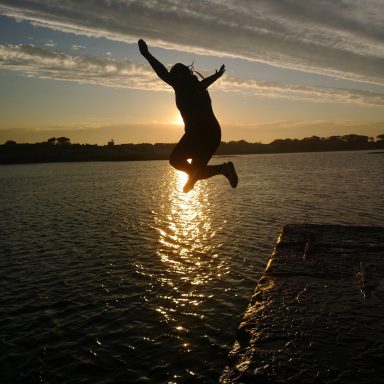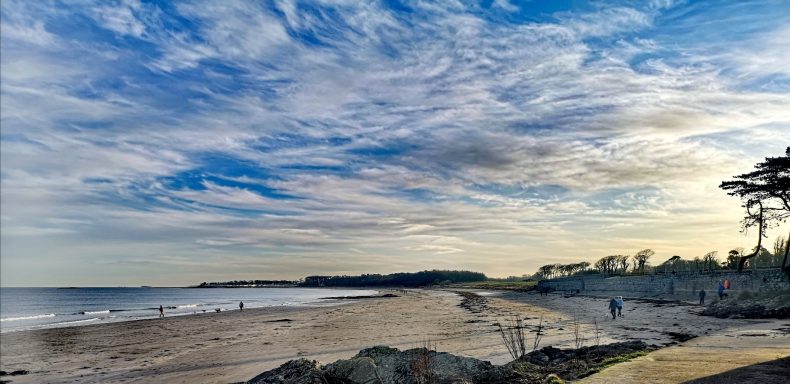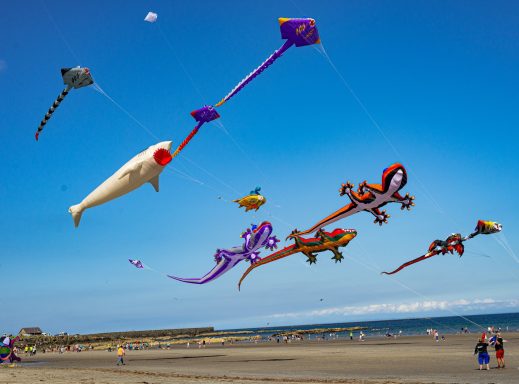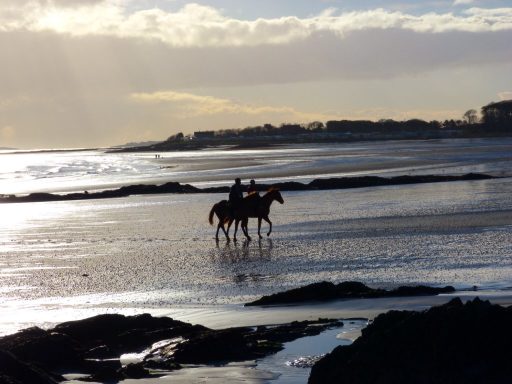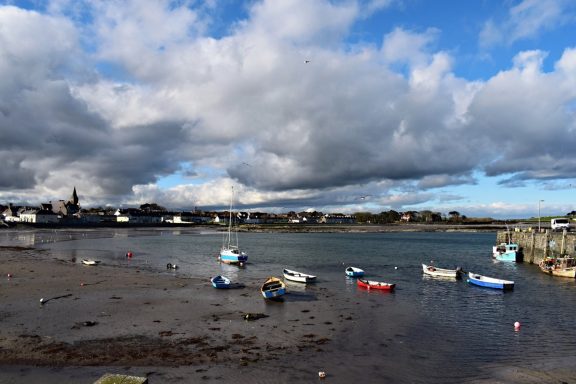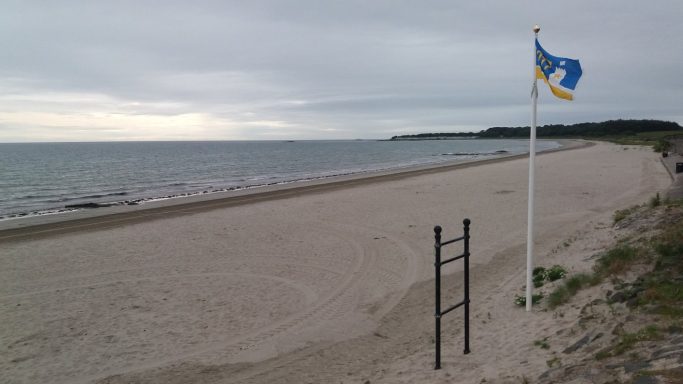Ballywalter
A superb little coastal village with a rich history

A grand day out
Outstanding views, and a rich history waiting for you to explore
Ballywalter is worth taking time to explore, and it is an excellent place for picnics, with three beautiful beaches to choose from.
From the working harbour you can enjoy fantastic views across the North Chanel of the Irish Sea to the Scotland, (in fact, Ballywalter is closer to Scotland than it is to Belfast).
Immediately behind the village is the small sheltered harbour bay with adjoining play park and easy access to the village shops and facilities.
The north shore, Dully Beach, is easily accessed from the village, with a fine sandy beach that is sheltered from large waves by an offshore reef.
South shore, Long Sands, is a beautiful expanse of sandy beach, ideal for bathing and watersports, or long walks.
There are three well-positioned carparks close to the shore at each of the beaches, which offer wonderful vistas of the seascape if you don't feel like getting out of your car.
Places worth visiting nearby
These are just a few of the interesting places waiting for you to explore in and around Ballywalter

Ballywalter Park
Ballywalter Park is the home of Lord and Lady Dunleath, the family residence since 1845.
The Mansion House was built in the Italianate Palazzo style by the eminent architect Sir Charles Lanyon and has been afforded Grade A* listing as being of exceptional architectural importance.
The house is surrounded by 30 acres of pleasure grounds and is situated within the walled demesne of some 270 acres. The total Estate runs to over 1200 acres and is home to one of Northern Ireland’s largest dairy herds, and includes significant acreages of arable crops and mixed woodland.
Ballywalter House and estate is a private residence, open to the public by arrangement only. Tap here to discover more and book a tour.

Lime kilns
The old Lime Kilns are located at the village-end of the south shore - you can't miss them. The lime kilns were in use at Ballywalter in the early 18th century. The lime was brought to Ballywalter in small sloops carrying about 70 tons. The boats beached below the kilns at high water. When the tide ebbed, the lime was unloaded into barrows and hand carts, which were kept in a store beside the kilns. It was then wheeled to the top of the kilns where it was dropped onto the burning coal and wood. When lit, the kilns burned for 24 to 36 hours. Stories were told about people from the village going to the kilns on winter nights to get warmed.
When processed, the lime could be bought by the bucketful for whitewashing buildings, or bought as barrelfulls by farmers to spread on their land to improve the soil.
Lime mortar was also made, to which animal blood from a local slaughter house was added; this acted as a setting agent and was used in building the walls round what is now the Dunleath Estate.
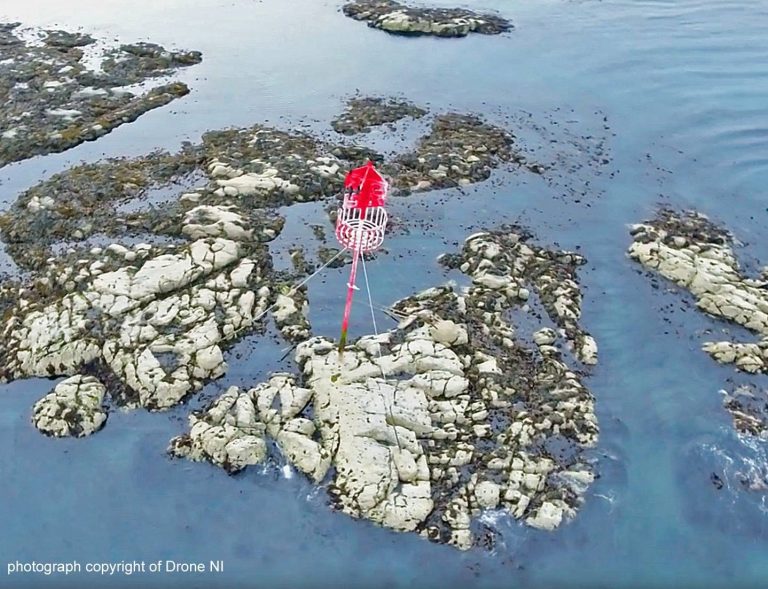
Skullmartin Perch
From Ballywalter harbour, looking in an easterly direction about a mile out to sea you will notice a cage-like beacon on a reef. The reef is the notorious Skullmartin Rocks, and the cage-like beacon is known as the Perch.
The reefs off the east coast of the peninsula are notorious for wrecking ships, and the perch provides a safe place to wait for rescue.
It is 11-metres high, and is designed to accommodate up to 20 shipwrecked men while the seas sweep over the rock at high tide.
The Perch was commissioned by Irish Lights at a board meeting of 1835, and erected shortly afterwards.

Whitechurch, formerly Whitkirk
Just a little way up the Dunover road towards Carrowdore, you'll see a signpost to the cemetery to the right: this is Whitechurch. First recorded in 1306 in the taxation rolls of pope Nicholas, but it is believed that some of the features of the church walls are medieval.
There are two full Norman coffin lids and one broken one at the side of the building.
Arthur Lusk's headstone inside the church records the fact that he circumnavigated the globe with Lord Anson in 1753.
There are headstones to four United Irishmen in the graveyard, all of whom where killed storming the markethouse in Newtownards in June 1798. The Maxwell brothers are among those killed and their headstone has a memorial written by Alexander McKenzie “the Bard of Dunover”
The oldest gravestone is to John Cooper an Ulster Scot who died aged 90 in 1608. He had emigrated to Ulster in 1606.
Gallery
Directions
Ballywalter is located on the Irish Sea coast of the Ards Peninsula, between Millisle and Ballyhalbert
We need your consent to load the translations
We use a third-party service to translate the website content that may collect data about your activity. Please review the details and accept the service to view the translations.
